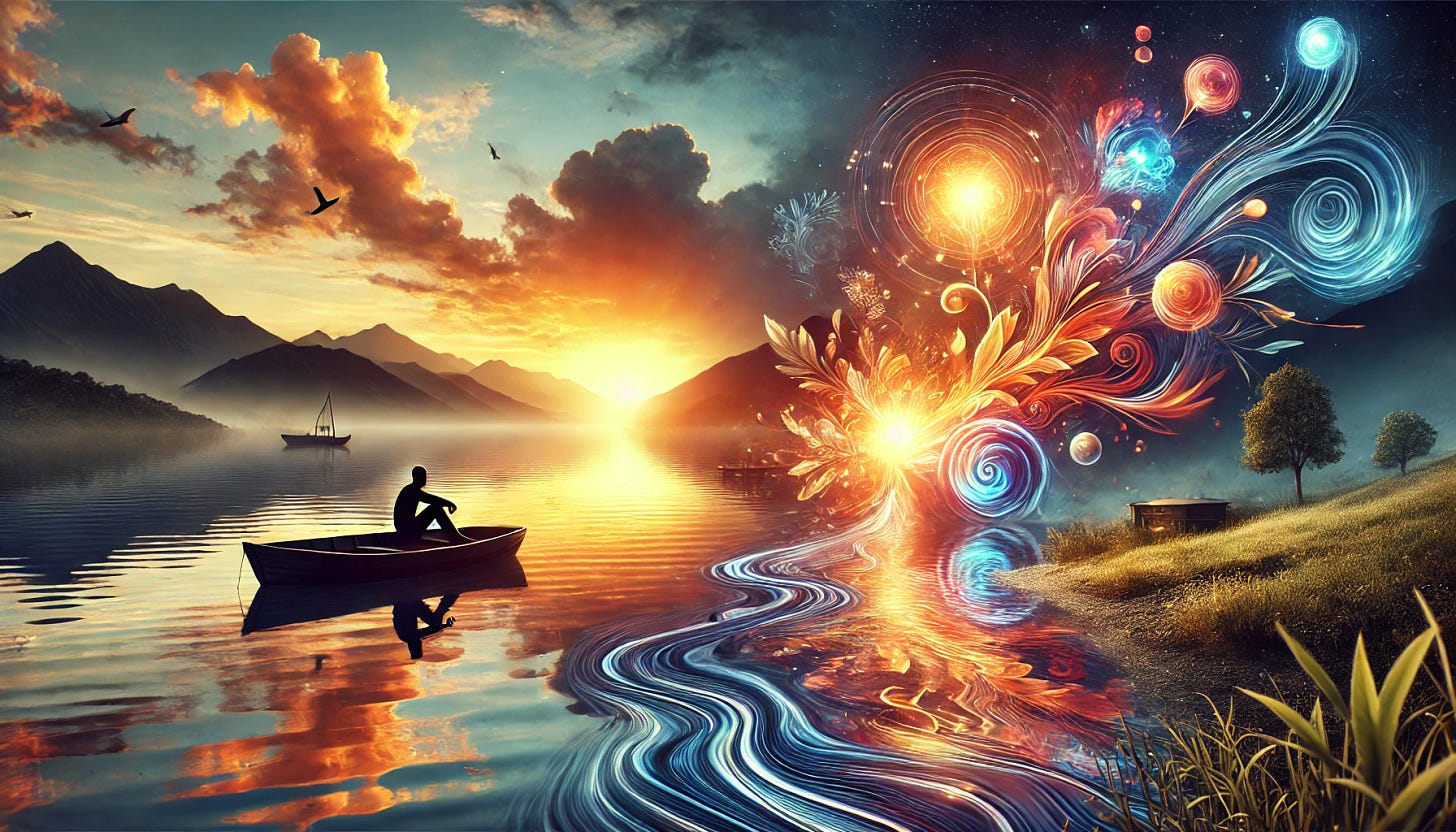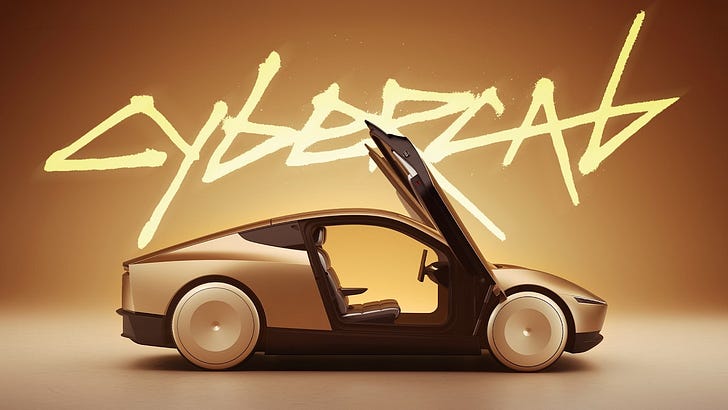Introduction: The Human Spark in Creativity
Imagine reading this essay and discovering that the words you're about to engage with were written by an artificial intelligence. AI has become remarkably capable of producing articles, generating images, and composing music, all with a level of precision that rivals human ability. But here's the twist—what gives this essay its true value isn't the paragraphs themselves, but the human spark behind them.
I, Roel Smelt, wrote this piece. While AI may have assisted in the process, it is my unique experience that gives this essay its depth. Allow me to explain why.
For years, I worked closely with business guru Dr. Eliyahu Goldratt, renowned for his groundbreaking models in production, project management, and distribution. Beyond those models, he developed something that truly fascinated me: the Thinking Processes—a logical framework designed to foster breakthrough ideas and creative solutions1.
I recall a specific moment while we were discussing transcontinental transport by ship with a management team. I watched Dr. Goldratt intently as he listened and gathered information. He might have been unconsciously applying his Thinking Processes, but there was something more. Suddenly, his eyes lit up—he had that famous "Eureka" moment. I witnessed firsthand the creative spark that ignited in his mind.
That's the spark this article is about. AI can help organize data, streamline processes, and even suggest new ideas, but it cannot experience that lightning strike of inspiration. That remains uniquely human. And while AI has its place, this creative spark is what elevates human work beyond mere data processing.
Section 1: Defining Creativity
Creativity has always been an elusive concept, often defined by its ability to bring forth something new, original, and valuable. Beyond this simplistic definition, creativity is deeply tied to human consciousness and our subjective experience of the world. It often emerges from complex emotions, intuition, and the ability to see things from unique, personal perspectives.
Consider the works of Vincent van Gogh, whose paintings were not merely representations of the external world but vivid expressions of his inner emotional landscape. His use of bold colors and dramatic, impulsive brushwork conveyed feelings that transcended the canvas. Such artistic expression is a manifestation of personal experience and emotional depth2.
Philosophically, creativity is viewed as an expression of human consciousness. Thinkers like Immanuel Kant and Arthur Schopenhauer linked creativity to the metaphysical and aesthetic realms of human thought. Kant argued that creativity is a product of free will and reason3, while Schopenhauer believed it emerged from the "will to create," a manifestation of human consciousness striving to express itself4.
Section 2: AI and Creative Output
Today, artificial intelligence can perform astonishing feats in what we traditionally consider creative fields. For example, the AI-generated painting "Portrait of Edmond de Belamy" was sold at Christie's auction for $432,500 in 2018, showcasing the potential for AI-generated art to be valued by the public5. Similarly, Google's DeepDream algorithm produces surreal, dream-like images by identifying and enhancing patterns within existing visuals. These examples have sparked debates about whether the resulting works can be considered truly creative or if they are simply the outcome of computational processes6.
OpenAI's GPT-3 and GPT-4 language models can generate human-like text, crafting essays, stories, and even poems that seem remarkably coherent and contextually appropriate7. Similarly, DeepArt and DALL·E can create images that mimic various artistic styles or generate entirely new visual concepts based on textual descriptions.
One notable example of AI in music is the album "Hello World" by the AI musician Flow Machines, which was released in collaboration with human artists and demonstrated how AI could contribute to modern pop music8. Another example is OpenAI's MuseNet, which can generate complex compositions in the styles of famous composers like Mozart or even blend genres, such as combining classical with jazz9.
However, a closer look reveals that AI's "creativity" is based on sophisticated data analysis, pattern recognition, and statistical probabilities—not the kind of intuitive insight that defines human creativity.
For example, when GPT-3 writes a poem, it does so by predicting the next word in a sequence based on patterns it learned from vast amounts of text data. It doesn't experience emotions or have personal insights that it wishes to express. Its outputs are derivative of the data it was trained on.
Similarly, when DeepArt transforms a photograph into the style of Van Gogh's "Starry Night," it applies mathematical algorithms to mimic the visual patterns of the original artwork. It doesn't understand the emotional turmoil or the historical context in which Van Gogh painted.
This leads us to the important distinction between creation and imitation. While AI may generate something that appears novel, it is ultimately synthesizing pre-existing data rather than experiencing a moment of inspiration or "Eureka." As seen in AI-generated novels or paintings, the outputs are sophisticated reproductions based on previous works rather than truly original, conscious acts of creation.
Section 3: The Role of Consciousness in Creativity
At the heart of human creativity is consciousness—an inner world of thoughts, emotions, and subjective experiences that influence every creative act. Human creativity often involves interpreting reality through deeply personal lenses—pain, joy, love, or loss. This subjective interpretation forms the foundation of artistic expression, which is something AI fundamentally lacks.
Consider the creation of Beethoven's Ninth Symphony. Composed when he was almost completely deaf, the symphony is a profound expression of his personal struggle and triumph over adversity. The emotional depth and complexity of the music resonate with listeners because they convey a deeply human experience10.
In literature, novels like "One Hundred Years of Solitude" by Gabriel García Márquez weave intricate stories that reflect cultural histories, personal experiences, and philosophical insights. These narratives are imbued with meanings that stem from the author's consciousness and life experiences11.
When Dr. Eliyahu Goldratt experienced his famous "Eureka" moment, it wasn't a result of a purely logical process or a mechanical application of his Thinking Processes. It was an intuitive realization, driven by his personal experience, knowledge, and ability to connect seemingly unrelated ideas in a flash of inspiration. This is a process no AI can replicate because it is grounded in the human ability to experience emotions, reflect on memories, and react to the world in unpredictable ways.
AI, in contrast, operates based on algorithms that process vast amounts of data and provide outputs according to preset rules and patterns. While it can generate what we perceive as "creative" work, it doesn't have the subjective emotional experience or the self-awareness to bring true originality into the world.
Section 4: Could AI Ever Achieve Creativity?
The question of whether AI could ever develop the capacity for true creativity raises intriguing technological and philosophical debates. Some researchers believe that as AI becomes more advanced, it could simulate consciousness, leading to a form of artificial creativity12.
Projects in artificial general intelligence (AGI) aim to create machines that possess understanding and consciousness similar to humans. If such a breakthrough were to occur, could AI then experience the emotions or subjective awareness necessary for true creativity?
However, even if AI were to replicate the outward behaviors associated with creativity, it would still lack the emotional depth and subjective experience that define human creativity. Emotions and consciousness are deeply rooted in the biological and experiential realities of being human.
Moreover, there's an argument that creativity involves not just processing information but also an element of unpredictability and irrationality. Human creators often take leaps of faith, embrace contradictions, and explore illogical ideas—traits that are antithetical to algorithmic processing13.
Conclusion
While AI continues to make strides in fields traditionally dominated by human creativity, the essence of what it means to create remains uniquely human. The lightning strike of inspiration, the emotional depth, and the conscious experience that drive true creativity are aspects that AI has yet to—and may never—fully replicate. As we advance technologically, it's essential to recognize and preserve the human spark that elevates our work beyond mere data processing.
Dr. Eliyahu Goldratt's Thinking Processes are detailed in his book It's Not Luck.
Vincent van Gogh's emotional expression in art is widely studied; see Van Gogh: The Life by Steven Naifeh and Gregory White Smith.
Immanuel Kant discusses aesthetics and creativity in Critique of Judgment.
Arthur Schopenhauer explores the concept of the "will" and its relation to art in The World as Will and Representation.
The sale of "Portrait of Edmond de Belamy" is documented in Christie's Auction House records; see Christie's press release, 2018.
The distinction between AI-generated art and human creativity is discussed in The Creativity Code by Marcus du Sautoy.
GPT-3 and GPT-4 language models are trained on extensive datasets; their outputs are based on learned patterns.
The album "Hello World" by Flow Machines demonstrates AI's role in music; see "AI Songwriting Machine Produces Pop Genius—But Does It Matter If It's Not Human?" The Guardian, 2017.
OpenAI's MuseNet can generate compositions in various styles; see OpenAI's MuseNet blog post at openai.com.
Beethoven's personal struggles influencing his music are documented in Beethoven: Anguish and Triumph by Jan Swafford.
Gabriel García Márquez's works reflect his cultural and personal experiences; see *Gabriel García Márquez: A Life* by Gerald Martin.
Discussions on AI and consciousness can be found in Superintelligence: Paths, Dangers, Strategies by Nick Bostrom.
The unpredictability of human creativity is explored in Creativity: Flow and the Psychology of Discovery and Invention by Mihaly Csikszentmihalyi.












Share this post